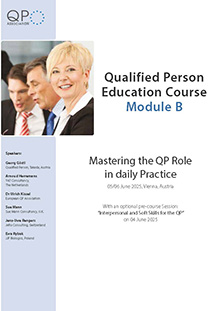EUROPE's ANSWER TO COUNTERFEITING OF MEDICINAL PRODUCTS: DIRECTIVE 2011/62/EU
In the form of Directive 2011/62/EU published on 1 July 2011, which will widely be applicable from 2 January 2013, the EU has issued a document that extends Directive 2001/83/EC with further requirements in four areas in order to contain the counterfeiting of medical products:
1. Introduction of obligatory safety features
2. Further requirements in the area of Good Distribution Practice (GDP) / Supply Chain
3. Requirements concerning active substances
4. Distribution of medicinal products via the Internet
Strictly speaking, very little is known regarding the introduction of safety features on the packaging of medicinal products subject to prescription. According to Article 54 of the new Directive, these features should enable the relevant entities of the supply chain to verify the authenticity and integrity of packaging. In order to verify the authenticity of a medicinal product, serialisation systems with 2D-datamatrix codes - as proposed by EFPIA or "securPharm"- could be used. But the EU Commission first has to specify this in delegated acts. For the implementation of the requirement concerning integrity, tearopen wrappers, seals or labels on the flaps might be possible. Working groups within the EU Commission are currently working on detailed specifications for these requirements. According to Dr Katrin Nodop, European Medicines Agency (EMA), implementing these requirements in practice will still take another three to five years. Nevertheless, most new packaging lines are already sold with an online 2D-code printer and reading unit today. This may also be due to the fact that in some countries such as France, Turkey, China and Brazil 2D-datamatrix codes are already applied or will be shortly. They are/will be used, for example, for registration and reimbursement of the costs for medicinal products. Dr Martin Friedrich of Bayer Technology Services also advises dealing with the new requirements at this stage. It is also possible that member states such as France will start even earlier with implementation.
Changes regarding the supply chain will have particular affects on brokers and distributors in particular. In this context, a broker is a natural person or a company that never actually possesses the product but brings together two trading partners. In future, both will need to have a quality assurance system. Requirements on documentation will increase significantly. It is also new that the European authorities are going to inspect distributors in future. High priority is given to the creation of a European database, containing distributors and their GDP status. Dr Nodop states that this database will be ready for use at the beginning of 2013.

Recommendation
30 June 2025
Drug Shortage Policy in the EU: How to deal with Regulatory Requirements? - Live Online Training
The measures regarding active ingredients and excipients shall render more secure products manufactured in third countries. These measures aim at assuring that the active ingredients have been manufactured in accordance with standards of good manufacturing practice at least equivalent to those laid down by the Union. A falsified ingredient is an ingredient for which wrong statements are made concerning identity, composition, manufacturer, country of manufacture or concerning its history, including the relevant documents and the channel of distribution.
In future, authorisation holders must confirm in writing that their API suppliers have been audited and that the EU GMP requirements (Part 2) on manufacturing are complied with. Manufacturers who wish to import an ingredient to the EU must have written confirmation from the competent authority of the exporting country confirming that the standards of good manufacturing practice during production are at least equivalent to those laid down by the Union. This also includes the necessity for a repeated and unannounced inspection of the manufacturer by the relevant authorities of that country. Exceptions to this rule are those countries appearing on the equivalence list maintained by the EU. The EU is going to evaluate the supervision of medicinal products in non-EU countries by means of an assessment procedure. This supervision includes the existing GMP rules, the system of inspections by the authorities and the question as to whether the Union is reliably informed on cases of non-compliance. The assessment has to be repeated every three years and authorises importing API without the written confirmations referred to above. This assessment shall take place in the relevant country by document review and a visit. If necessary, manufacturers will also be controlled by inspectors from EU authorities. According to Dr Jürgen Hoose, GMP Inspector, Hamburg, implementation will pose a great deal of problems. He states that accompanying an inspection in China would only be possible with the extensive help of interpreters.
The new Directive also deals with sales via the Internet. EU citizens shall be sensitised for the dangers of buying medicinal products via the Internet. Member states are furthermore invited to list authorised Internet pharmacies. These will have a logo on their Website showing their authorised status. EMA is going to provide for a Website referring to the relevant pages of the member states.
In addition to implementation of the new Directive 2011/62/EU an amendment to Chapter 5 (Production) of Part I, EU GMP Guideline is also planned. This change comprises an extension regarding the qualification of suppliers of APIs and excipients posing an aggravated risk. Apart from securing compliance with GMP rules during production, integrity of the complete supply chain of starting materials will need to be ensured. That means auditing distributors and brokers in turn. These additional requirements will necessitate an increased involvement by the Purchasing Department of pharmaceutical manufacturers in the quality assurance system of the manufacturer of medicinal products.
Author:
Dr Robert Eicher
CONCEPT HEIDELBERG



